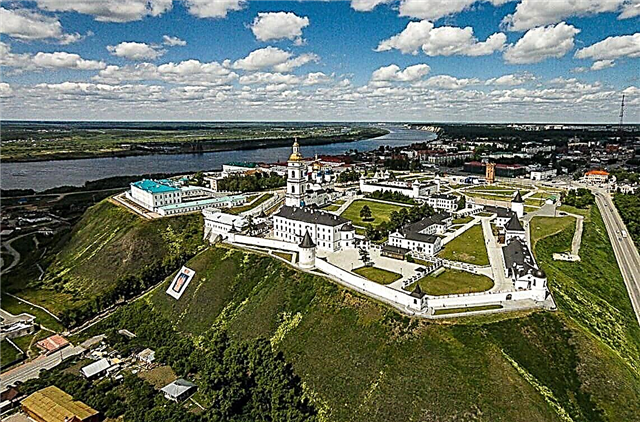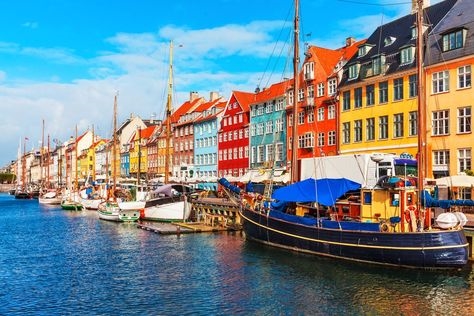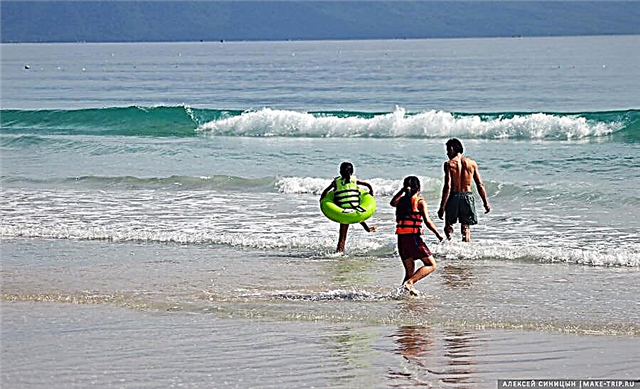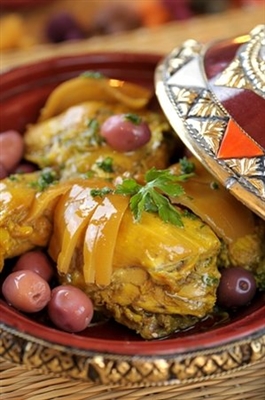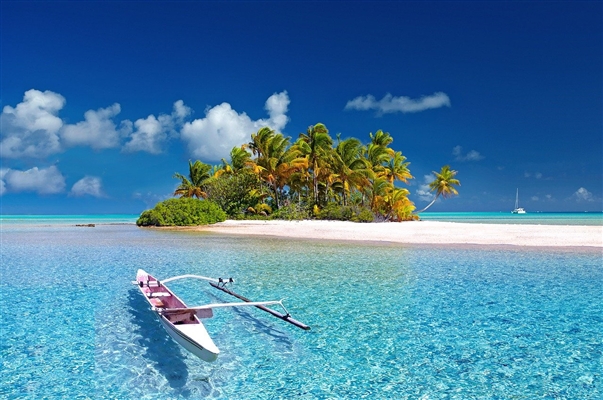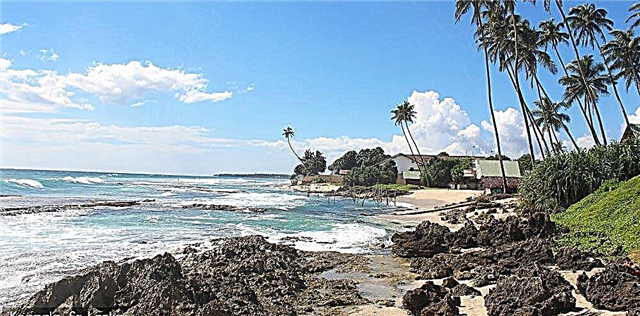The Vologda region is the pearl of the Russian north. There is everything for different types of tourism: unique clean nature, ancient cities and holy places. The region is included in the objects of the "Silver Necklace of Russia" route. There are several protected natural areas in the region. The largest of them is the Russian North Park in the Kirillovsky District, in the unique forests of which there are many wild animals.
The settlements of the region for the most part have a long history, some of them stood at the origins of the Russian land. Due to its location, the region suffered little in the wars; many monuments of history, religion and architecture have been preserved here. Traveling around the Vologda region, you can not only touch the antiquity, but also study folk crafts, purchase the creations of local craftsmen.
The largest cities of the Vologda region
List of the largest cities in terms of population in the region.
Cherepovets
The largest city in the region. It is located near the Rybinsk reservoir, 125 km west of Vologda. The city has a rich culture and history. You can see the ancient temples, visit the museums of the mayor Milyutin, the artist Vereshchagin, the Galsky estate. There are many beautiful places for walking in the city, and on the Rybinsk reservoir there are hunting and fishing bases. Festivals of bardic, classical and rock music are held annually.
Population - 318 thousand people.

Vologda
The center of the region, an ancient city known since the 12th century. The city is attractive for tourists due to its rich traditions of lace-making, icon painting, wooden architecture. The city center can be viewed by climbing the bell tower of the 16th century St. Sophia Cathedral. A must-see is the museum within the walls of the Vologda Kremlin, the Resurrection Cathedral of the 18th century, the Museum of Peter I and the city embankment. In Vologda, there is an extensive Botanical Garden and the residence of Father Frost.
Population - 308 530 people (2021).

Falcon
A small town 25 km from Vologda, located on the banks of the Sukhona River. Previously, this place was called the village of Sokolovo, it has been mentioned in sources since the 17th century. The city is famous throughout the country for its large paper and cardboard production. Here you can visit the Museum of Paper, the Museum of Local Lore with a rich exposition of objects of ancient life.
Population - 37 thousand people.

Veliky Ustyug
The small town is known throughout the country for its ancient history and its main attraction. It is here that the homeland of Santa Claus was officially announced. Tourists are also attracted by a large number of architectural monuments included in the number of cultural heritage sites: churches, manors, monasteries. In the center of the city, there is a culture park, built in the 19th century, for walking and entertainment.
Population - 30 thousand people.

Gryazovets
The town is located 50 km south of Vologda. Founded since the time of Ivan the Terrible, it has traditionally been a craft and trade center. In our time, buildings of the 19th century have been preserved in the city center: shopping arcades, stone mansions. There are carved wooden houses on the outskirts. Gryazovets is located in the center of the "Komel Forest", which houses several ancient monasteries.
Population - 14 thousand people.

Babaevo
A cozy town 300 km west of the regional center, stands on the Kolp River. The city itself with the architecture of the early 20th century and its surroundings are of interest to visit. On the outskirts there is a protected natural monument Kamennaya Gora, on its territory there is a sanatorium. This natural area is recognized as ecologically clean. Near Babaevo, in the village of Borisovo-Sudskoye, several manor estates have been preserved, there is an old church and a historical museum.
Population - 11 thousand people.

Vytegra
The town is located 360 km north-west of Vologda. The name comes from the Vytegra river, on which the city is located. From here it is only 15 km to Lake Onega. In the right-bank part, many architectural monuments of the 17th-19th centuries, old Orthodox churches have been preserved. There are several museums, including Submarine B-440. There are unique karst lakes in the Vytegorsky district.
Population - 10 thousand people.

Totma
The city is located on the Sukhona River, at a distance of 215 km from the center of the region. The year of foundation - 1137. The main part of the historical buildings has been preserved here, thanks to which the city is included in the list of especially valuable historical cities. The architectural style of the city is especially distinguished in a separate direction "Totem Baroque". There are several museums in the city itself, as well as in the vicinity, including the N. Rubtsov Museum in the village of Nikolskoye.
Population - 9895 people (2017)

Kharovsk
Geographically, the city is located in the center of the region. The city was founded at the beginning of the 20th century during the construction of a railway station. There are several tourist routes in the Kharovsky district. A trip to the memorable places of Vasily Belov will tell about the life of the writer and the heroes of his works. There are programs for lovers of Orthodox antiquity and even extreme motor sports.
Population - 9 thousand people.

Belozersk
The town on the shores of White Lake was mentioned for the first time in the Tale of Bygone Years. Guests can visit the Belozersky Kremlin with the Transfiguration Cathedral (17th century) in the center, ancient churches: the Assumption (16th century), the All-Merciful Savior (18th century). The city center has preserved the stone buildings of the early 19th century practically unchanged. Every year the festival "Epics of Beloozero" is held here.
Population - 9 thousand people.

Ustyuzhna
The city is located 250 south-west of Vologda, on the Mologa River. The place is famous for its skilled blacksmiths, they are also known as the "Iron Field". Today, an annual blacksmithing festival is held here. The museum expositions keep the works of Aivazovsky and Kustodiev, works of handicraft art, objects of Old Russian icon painting. There are several churches of the 17th-18th centuries in the city. A house-museum of Kuprin and Batyushkov was opened in the Danilovskoye Estate.
Population - 8700 people.

Nikolsk
The town is located on the Yug River, from the center of the region to it, the distance is 440 km to the east. First of all, the local nature is beautiful: pine forests with many wild animals, birch groves, transparent rivers. There are unique holy places here. The architecture of the city consists of houses with mezzanines, carved decorations, balconies. Rural tourism is actively developing: programs with fishing and hunting, learning crafts and visiting fairs.
Population - 8 thousand inhabitants.

Kirillov
The city is located 100 km from Cherepovets. Since medieval times, these places were considered sacred, the name was given to the city by the name of the monk Cyril, who founded the Kirillo-Belozersky monastery here in 1397. The oldest building in the imposing monastery complex is the Assumption Cathedral in 1497, a unique three-tiered building with high towers. There are several active ancient monasteries in the area.
Population - 7.5 thousand people.

Krasavino
The city is located in the Velikoustyug region, on the Northern Dvina River. The natural landscapes of these places are often called northern Switzerland: forests and green meadows, hills, transparent lakes and rivers. In the vicinity of the city there is a natural monument Colored flints with unique deposits of minerals, animals and plants from the Red Book. In the city there is a museum "Russian hut", a museum of the hero of Russia S. A. Preminin.
Population - 6 thousand people.

Kadnikov
The town is located in the Sokolsky district. Several tourist routes lead here for lovers of ancient architecture, Orthodox churches and monasteries. The city center has preserved the stone buildings of the 19th century, 18 buildings are included in the list of cultural heritage sites.Near Kadnikov there is a monument of nature and history "Fox Mountains", there was a camp of ancient people.
Population - 4.5 thousand people.


